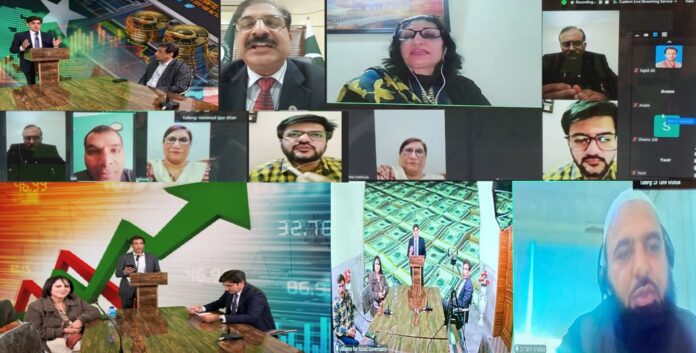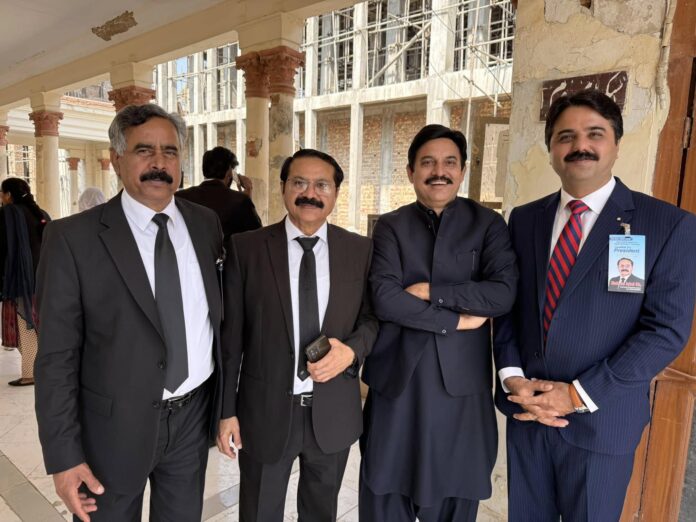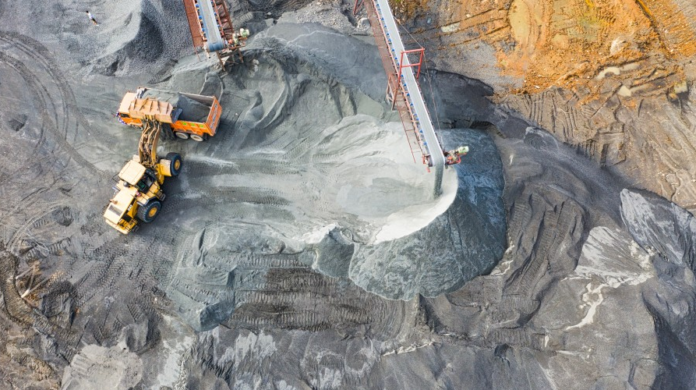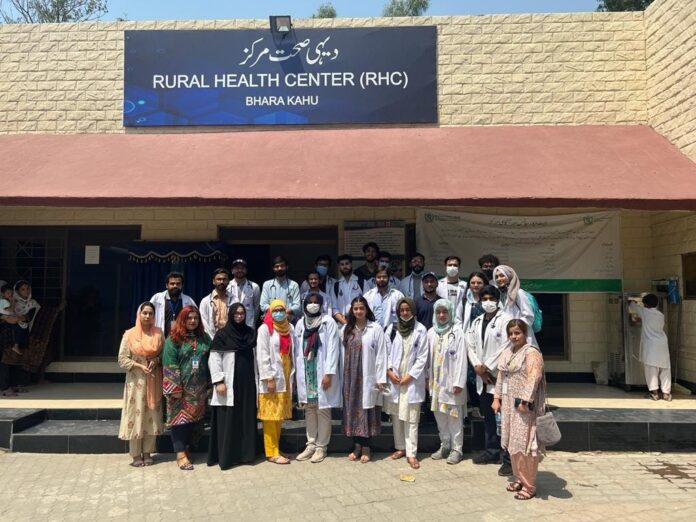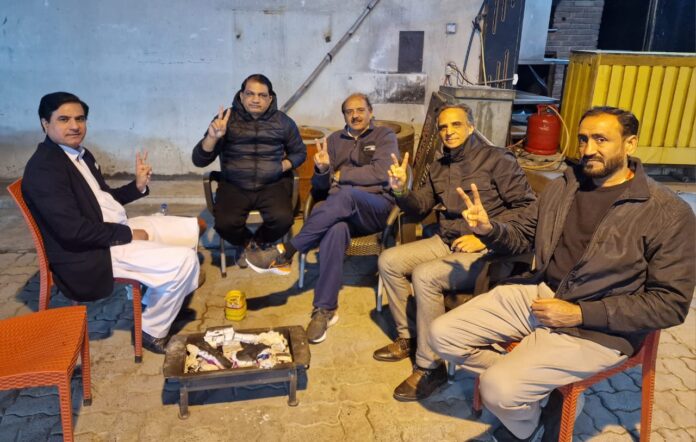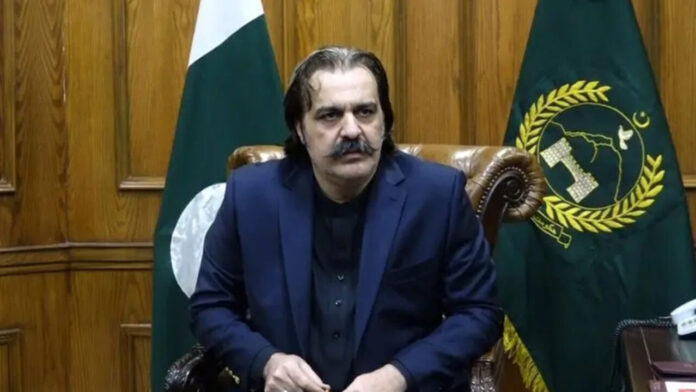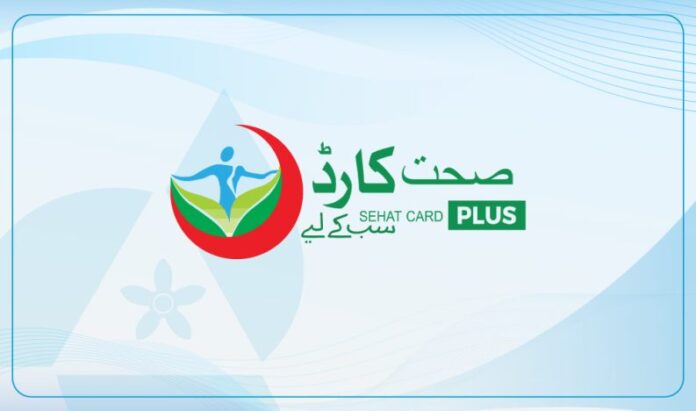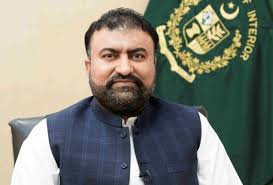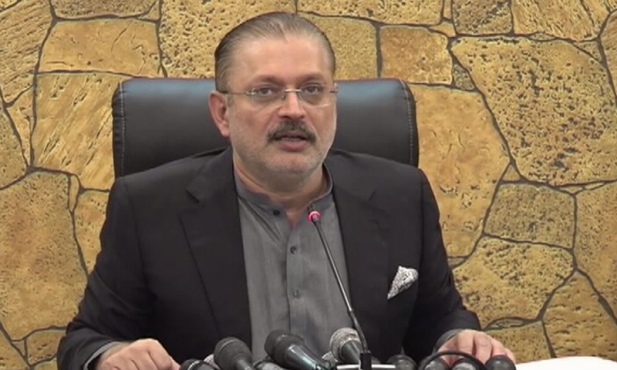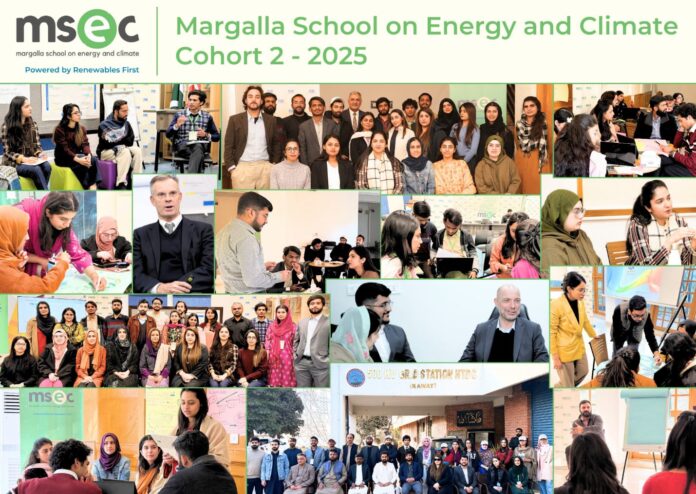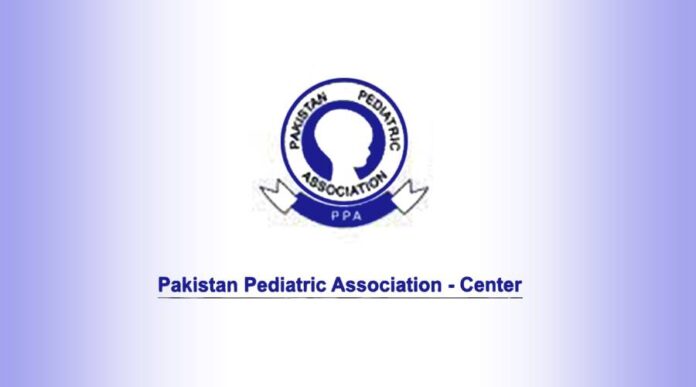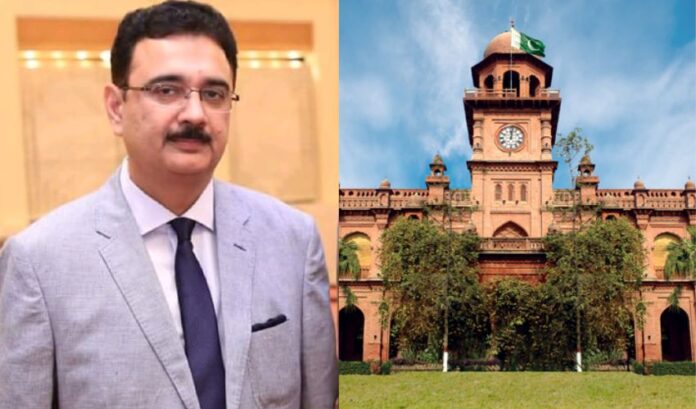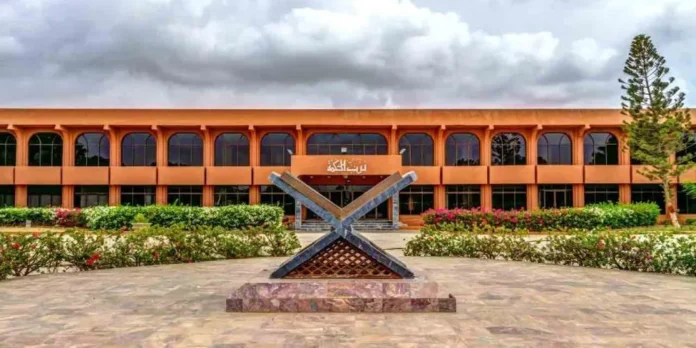Experts outline path to economic growth for Pakistan at webinar
Minerals exploration – A key to country’s economic growth
By Fakhar-e-Alam
PESHAWAR, Feb 23 (APP): With deposits ranging from gold and copper to coal and salt, Pakistan has vast deposits of minerals offering opportunities to stimulate its economy and progress of people, once this area if fully focused to exploit this potential.
Key regions including Balochistan, Khyber Pakhtunkhwa and Sindh hold the promise of significant economic prosperity through mineral exploration as Balochistan’s Reko Diq copper and gold project, with reserves estimated at over $260 billion, is a prime example of the wealth lying beneath the surface.
Similarly, the Thar coalfields—one of the largest untapped coal reserves globally—represent an opportunity to meet domestic energy needs and cater to growing export demands besides gems, granite and marble of Khyber Pakhtunkhwa.
These deposits were there since centuries before they came to fore after mining and drilling in different areas of these provinces just a couple of decades back. But, even after knowing about these deposits, the country is still in planning, tendering or bidding phase in many cases.
In some instances like Reko Diq different hiccups and litigation between the local authorities as well as the mining company, delayed the mining process even when it was direly needed in view of prevailing economic challenges.
So to say, despite being a home to precious minerals worth trillions of dollars, respective governments failed to fully unlock these natural treasures. Unfortunately, our mining industry remained largely underdeveloped due to infrastructure challenges, inadequate investment and complicated regulatory mechanisms.
A crucial aspect of this revitalization is China-Pakistan Economic Corridor (CPEC) that seeks to enhance infrastructure in resource-rich areas, improving access to mineral deposits and facilitating mining operations.
Besides China, countries like Saudi Arabia, Kuwait and many others are mulling investment in this sector and these overtures would not only benefit the exploring companies but also help improve economic conditions indigenously.
“The government’s move to modernize the mining sector by offering tax incentives and streamlining regulations is expected to draw both local and foreign investors,” remarked an economist Prof Dr Naeemur Rehman Khattak.
He said Pakistan’s revised mineral exploration laws aim to encourage wider participation, creating opportunities for both large-scale corporations and smaller mining ventures.
“Projects like Reko Diq and Thar coal would not only bolster exports, particularly of coal and precious metals but also generate thousands of jobs in sectors like mining, infrastructure development and related industries like cement and steel production,” Prof. Naeem said.
Beyond traditional mining, he claimed that Pakistan’s gemstone industry holds export potential estimated at US$ 32 billion.
Recent efforts to attract foreign investment and the government’s focus on revitalizing the sector, however, signaled a shift towards realizing the full potential of these resources and consistency of policies in these sectors are hoped to bring about positive changes.
“Besides precious minerals, our marble, granite and gems industry also offer magnanimous profit opportunities,” stated Faraz Ahmed, a marble miner from Peshawar. “Profitability in marble industry is an easy going task as an investor with basic know-how and Rs three million investment could earn Rs 10 million annually.”
But, he emphasized use of modern techniques and machinery to fully benefit from this sector as there is bulk demand of marble being explored from Mohmand, Swat and Buner districts, within the country and abroad. “At present, many miners rely on outdated equipment and unskilled labor leading to significant resource waste. If we shift to modern techniques from traditional methods of exploration, the dividend would be much more.”
Being Khyber Pakhtunkhwa specific, the province has vast deposits of minerals including 14 trillion tons of marble, limestone, dolomite and gemstones and according to the KP Board of Investment and Trade (KP-BIT), the province’s marble production has been increasing steadily, although export numbers still lag behind the true potential.
“We have introduced a Mining Cadastre Portal to improve transparency and easing the investment process,” informed Junaid Khan, Director General of Mines and Minerals Department.
“Mapping and exploration of mineral sites in regions like Chitral, Orakzai and Kurram is underway with the help of Geological Survey of Pakistan (GSP),” he said. “The government is also working to establish a gemstone laboratory to improve mineral testing process with the help of modern equipment.”
The province has ambitious plans like exploring lithium in Chitral and rare metallic minerals in Orakzai besides improvements in mining safety standards. Besides creation of new industrial clusters for mineral extraction, the government is also constructing Mohmand Marble City on 350 acres and similar projects have been planned for Buner. KP’s growing marble and mining sectors are further supported by Rashakai and Nowshera Special Economic Zones (SEZs) where portions of land are allocated for marble and mining units.
Since the country is in dire need of revenue generation and foreign exchange earning to break the debt shackles, investment in minerals and mining sectors would be of great importance to fully tap this potential, accelerate economic growth and reduce dependence on foreign aid.
Now, with the right policies and investments, Pakistan’s mineral wealth can serve as a cornerstone for its future economic stability and improve the living conditions of its people.
South Punjab: A struggle for accessible healthcare
By Atif Ismail
MULTAN, Feb 23 (APP):: After economic sustainability, health and education sectors always remain of utmost importance when it comes to delivery of basic amenities to people in almost every developed country of the world.
But, in many countries of African and Asian continents, it still remain a far cry for people living in remote and rural areas and Pakistan is also not an exception where many areas still lag behind in these facilities.
South Punjab is one of the examples, where over 60% of the population living in villages and small towns had least access to quality healthcare for hospitals being less-equipped, specialist doctors falling short of requirement and primary healthcare facilities being inadequate.
Rural communities had been struggling with preventable diseases, maternal health complications and poor child nutrition and absence of sufficient healthcare at their doorsteps forcing many to travel long distances to urban hospitals. Poverty and lack of awareness were the other factors making even basic medical treatment unaffordable for a large segment of society.
But, the things started changing recently when the present Punjab Government led by Maryam Nawaz Sharif took on the challenge of providing healthcare to even remote areas by equipping hospitals, infrastructure improvement, increasing staff in these areas and launching mobile health services. Vaccination drives and awareness campaigns are the other efforts on ground.
“We are on it. Our government keeps health sector on top priority. Clinics and hospitals are being equipped with modern health facilities,” were the remarks of Provincial Minister for Health Imran Nazir during his visit to Maryam Nawaz Health Clinic in Qasim Bela.
“Maryam Nawaz Clinics were a revolutionary initiative by the Chief Minister Punjab. These clinics are equipped with modern medical facilities and advanced healthcare tools,” the minister had stated.
Explaining further, he had informed, “the Clinics feature a fully digital system from patients’ entry to treatment. Citizens can access these clinics round the clock as 21 Maryam Nawaz Health Centers were being upgraded in Multan division.”
Although, according to data available with South Punjab Secretariat, there are nine DHQs, 35 THQs, three Town Hospital, 122 Rural Health Centre, three Civil Hospital, 761 Basic Health Units, two Trauma Centre, one Eye Hospital, three Maternity Hospital, Seven TB Clinics, 75 MCH Centers, 380 Dispensaries and 17 CMC Centers, yet the facilities were short of masses needs living in the region with many facilities facing human resource shortage.
Now 188 more clinics are being set up and health experts like Dr Jabran, Coordinator Integrated Reproductive Maternal Newborn Child Health (IRMNCH) terms it as a revolutionary steps to ensure health facilities to people especially living in “Kachi-Abadis” and remote areas.
He informed that initially, three BHUs were outsourced for improving the health facilities in three different locations. “The doctors have been tasked to examine at least 900 patients per month along with provision of medicines and the government is offering Rs 400 against every patient.”
He said the government is also installing solar systems and providing residences to support the holders of BHUs. “This step is ensuring 24/7 availability of doctors for local communities and after its success the initiative would be expanded to 82 BHUs in district Multan and each outsourced unit will also manage 20 delivery cases every month.”
Dr Jabran also mentioned to ‘Clinic on Wheels’ initiative under which eight vehicles along with doctors visit eight different union councils on daily basis and treat people. “The government is planning to purchase much more vehicles to expand this program across the province.”
Similarly, he said, one field hospital is also operational in the district. “A bus carrying modern diagnostic machinery and medical experts also visit different areas; medicines are offered to ailing people and serious patients are shifted to hospital on doctors’ recommendation.”
Now, after a long time, revamping of BHUs and RHCs is also in progress in South Punjab and the hospitals are being upgraded with improved facilities and infrastructure.
The initiative of “Big Catcher” is also progressing effectively as kids earlier neglected in vaccination campaigns are now traced in every union council by a team of five officials and vaccinated.
Besides introducing 32 field hospitals across province, the Punjab government is also on toes for making initiatives like Hepatitis Control, TB Control, Infectious Control Program and other programs, a success.
Heaping praise on health initiatives, Madeeha Qureshi, a patient at Nawabpur village remarked that it is for the first time that health facilities are being upgraded in remote villages. “It is a good sign and we hope it would surely facilitate the people. I myself got checked my minor daughter locally that saved my time and money.”
Salman Amjid, another citizen, also lauded the reforms in health sector saying, “I was suffering from cough and flu due to a viral infection. The newly set up ‘Clinic on Wheels’ treated me well and now I am in good health and like this initiative.”
With the Punjab government already setting new examples in serving the masses, such welfare initiatives must be consistent and for a longer period to rid poor people in remote areas from problems confronting them since decades.
APP/atf/maz (APP Feature Service)
Resilience amidst ruins: Stories of flood survivors’ rehabilitation
By Ali Jabir
ISLAMABAD, Feb 23 (APP): Whether it is test of endurance or a penalty of human sins, every ethereal calamity leaves behind tales of pain and agony as well as resilience of human beings to emerge again from ashes in a resolution to survive.
The 2022 devastating monsoon rains, was another ethereal calamity leaving millions displaced, vulnerable and grappling with the remnants of their lives. Among the hardest-hit areas were Rajanpur in Punjab and Jaffarabad in Balochistan, where families endured unimaginable hardship. Yet, even in the face of such adversity, stories of resilience and recovery emerged, demonstrating the unyielding human spirit.
Wener Mai is one of examples whose mud house in Basti Habib Patafi, Rajanpur had succumbed to relentless rains and flash floods. With her husband Qasim and their three children, she found herself exposed to harsh weather conditions, devoid of basic necessities. Accessing clean water became a daily struggle and without shelter, the family was left vulnerable to numerous odds.
“We had no water for drinking and cleaning. We were out in the open sky without any protection from weather,” Mai recounted as her voice tinged with memory of despair. ““When I opened the packing, I found, most of all items were lost in flooding. We desperately needed those items, but couldn’t afford to buy again.”
Then, the relief came through the BRAVE humanitarian assistance program, funded by FCDO and implemented by Concern Worldwide in partnership with Lodhran Pilot Project (LPP). Mai’s family received emergency shelter kits, hygiene and dignity kits and non-food items that provided immediate relief, allowing the family to construct a safe space and escape unrelenting rains.
“The kitchen items helped me cook food for my family and the soap ensured my children could stay clean. These small things had made a big difference in our lives,” she said in gratitude.
Today, Mai’s family is on a path to recovery. The shelter and supplies provided a foundation for rebuilding, giving them a renewed sense of dignity and hope in the aftermath of disaster.
Abdul Hameed, a daily wager of Murad Colony in Jaffarabad district of Balochistan province faced a similar ordeal. Supporting a family of nine, including a disabled son and a wife battling Hepatitis C, Hameed’s modest earnings of Rs 600 a day were barely sufficient. The floods submerged his home forcing the family to live on roadside for over a week.
“We had nothing left. Everything was destroyed, and we didn’t have any way out,” Hameed recalled, with a heavy voice.
Upon returning to their home, they found it reduced to rubble and survival seemed insurmountable until the BRAVE program extended a helping hand. The essentials provided by the organization offered immediate relief, easing their burden and providing a semblance of stability.
“The assistance gave us hope; it helped us survive when we thought we couldn’t,” Hameed said. “While we have a long way to recover, the support has lightened our burdens. It reminded us that we are not alone in this struggle.”
For families like Mai’s and Hameed’s, the journey to rehabilitation and recovery is far from over. The BRAVE program’s emergency response has provided a critical lifeline, but the long-term process of rebuilding homes, restoring livelihoods and ensuring access to clean water and healthcare remains a pressing challenge.
Although the government agencies like National Disaster Management Authority (NDMA) and numerous provincial departments had always been on toes for relief and rehabilitation of flood victims, organizations working in private sector and under the umbrella of other countries development agencies had also been on the forefront.
Despite the odds, these families embody resilience. They are reminders of the importance of humanitarian aid and the profound impact it can have in restoring dignity and hope to those who have lost everything. Their stories underscore the need for continued support and solidarity as Pakistan navigates the aftermath of one of its most devastating flood seasons.
According to FCDO officials, hygiene promotion and awareness is vital part of FCDO’s BRAVE humanitarian responses, especially for women beneficiaries to ensure proper use of distributed hygiene and dignity kits and items including awareness on menstrual hygiene management (MHM).
Wener Mai was one among those who attended hygiene sessions and received guidance on the use hygiene and dignity kits.
“Special facilitation was accorded to Physically Challenged and Old Age beneficiaries by arranging delivery of relief items at their door step,” the official said referring to dedicated assistance for elderly and physically challenged masses
Abdul Hameed was among many who collected these items from distribution point in his village as his story draws attention to vulnerabilities faced by different families, emphasizing the need for targeted assistance during emergencies.
Concern Worldwide led consortium implemented BRAVE in collaboration with local and international NGO partners like LPP that worked as a downstream partner under and implemented flood response efforts in Rajanpur district of South Punjab.
These stories of rehabilitation enlighten a passion for humanity especially for those in turmoil and leave the lessons for philanthropists and other human beings to stand by their brethren whenever such a situation emerges.
Senior journalist Rana Imran Latif felicitates Muhammad Arshad Ansari on his re-election as the unopposed Secretary General of Pakistan Federal Union of Journalists (PFUJ). National Press Club’s former president Anwar Raza and senior journalists Zaheer Shahzad and Omer Hafeez are present.
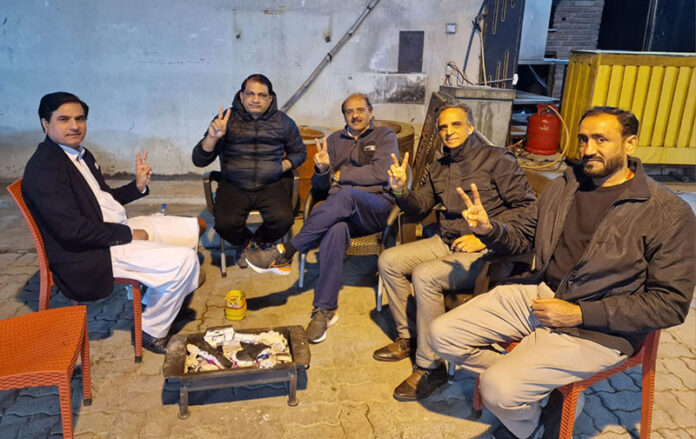
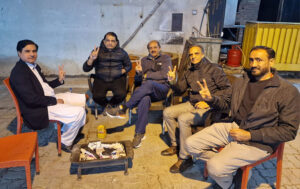
ISLAMABAD: February 22 –
Senior journalist Rana Imran Latif meets PFUJ Secretary General Arshad Ansari
ISLAMABAD, Feb 22 (APP): Senior journalist Rana Imran Latif on Saturday met with General Secretary Pakistan Federal Union of Journalists Muhammad Arshad Ansari here.
Arshad Ansari has been re-elected as Pakistan Federal Union of Journalists ( PFUJ) secretary general unopposed.
Rana Imran Latif congratulated Arshad Ansari on his unopposed election and expressed the hope that he will continue to strive for protection of journalists rights.
Former President of National Press Club ( NPC) Anwar Raza and senior journalists Zaheer Shahzad and Omer Hafeez were also present during the meeting.
KP CM inaugurates Jaroba dam in Nowshera district
940,000 patients treated under Sehat Card in one year
Inglis’ 110* trumps Duckett’s 165 as Australia start Champions Trophy on winning note
Federal Minister for Maritime Affairs, Qasir Ahmad Sheikh, addresses furniture traders and listens to their concerns at the furniture market.
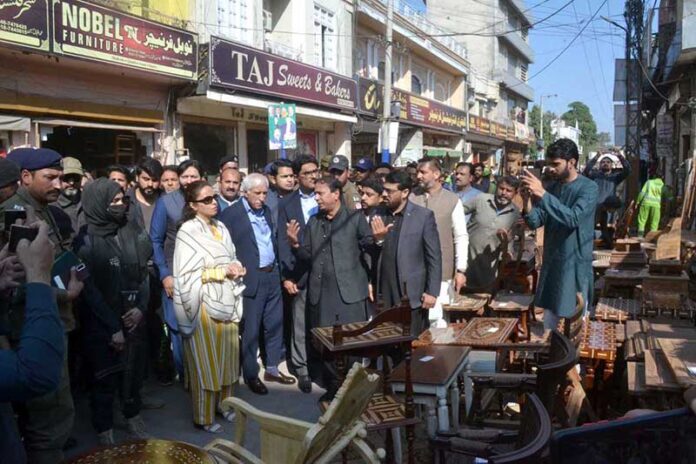
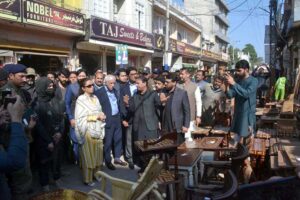
CHINIOT: February 22 –
Federal Minister for Education Dr Khalid Maqbool Siddiqui addressing during inauguration of free surgical camp at KKF medical complex.
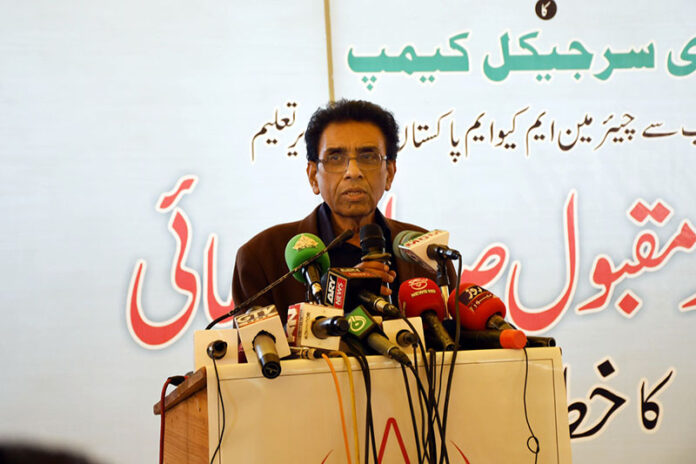
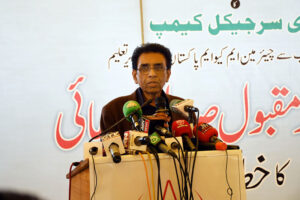
HYDERABAD: February 22 –
